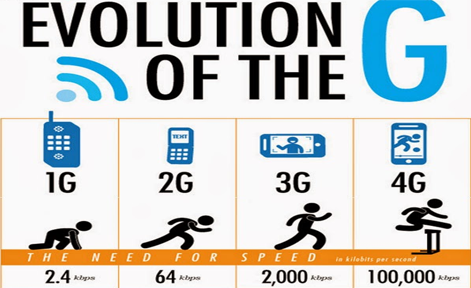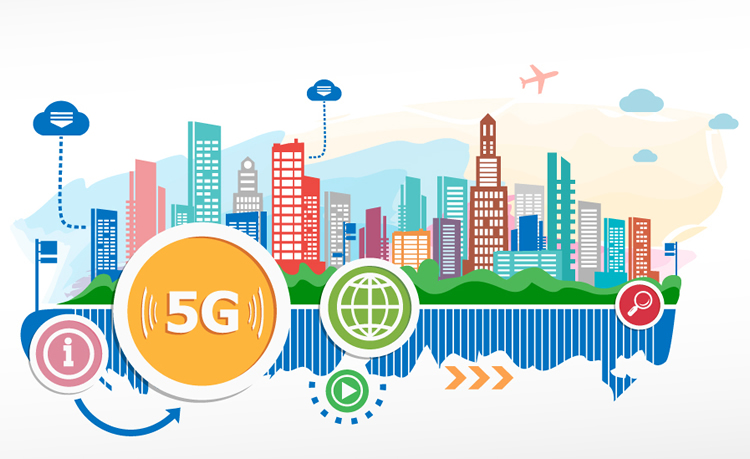
1G, 2G,…& 5G: The evolution of the G’s
Telecommunication and networking has been and will be one of the core technologies in helping the evolution of mankind and technology itself. If it wasn’t for it for these channels of communications and data transmission, we would probably still be in an era where technology isn’t as advanced as today.
Wireless communication technology inside cell phones and other mobile devices has evolved over several decades. Starting with the then revolutionary 1G (referred to as the earliest form of voice only network) all the way to the 4G of today and the 5G of the near future. But what has really changed? and what is the core driving principles of these wireless communication technology?
First off, the G in “4G” or “5G” stands for generation and the number is just a representation of the evolution of technology. Currently, as you may know, we are using the 4th generation of wireless communication technology. But lets start from where it all began:
1G and 2G
There never was something called as 1G at first. It basically was a network with only voice call capabilities and only got the name 1G after 2G was put to use. During the 2G era, that lasted for quite a while from 1980’s to 2003, there were quite a few advancements made within the spectrum itself such as GSM, GPRS and EDGE.
- GSM: Short for Global Systems for Mobile Communication enabled data transfer on top of voice communication at speeds that are seen as a joke today (30-35 kbps). It played a critical role in the evolution as mobile technology as right about the time it was being used mobile phone connectivity and popularity exploded.
- GPRS: General Packet Radio Service operated on the similar 2G technology as GSM with a few refinements with gave it higher data speeds (110 kbps)
- EDGE: Enhanced Data rates for GSM Evolution introduced in 2003 was somewhat known to be 2.9G or 3G due to its significant advancements over GPRS and GSM. It offered high speeds of 135 kbps and continues to be used on many mobile networks even today as is satisfies the basic needs of both carriers and users in various parts of the world.

3G
This was a big revolution in terms of technological advancement for network and data transmission. 3G had and has speed capabilities of up to 2 mbps. It enabled smartphones to provide faster communication, send/receive large emails and texts, provide fast web browsing, video streaming and more security amongst others. It was widely based on CDMA2000 (Code-division multiple access) and EDGE technologies. Now you might wonder why EDGE? Well, because EDGE was so advanced it was able to provide enough capabilities to be considered as 3G. CDMA2000, on the other hand, operated on similar key concepts but did it better. It enabled multiple channels to communicate at one same thus improvising on the over speed and connectivity.
4G
The 4G standard sets several requirements for mobile networks
including mandating the use of Internet Protocol (IP) for data traffic and minimum data rates of 100 Mbps. [LifeWire] which was a huge jump from the 2 mbps for 3G. It is often referred to as MAGIC
- M – Mobile multimedia
- A – Anytime anywhere
- G – Global mobility support
- I – Integrated wireless solution
- C – Customized personal service
It is not much to do with the technology it uses but rather than the requirements set forth by International Telecommunication Union’s Radio communication Sector (ITU-R). These standards are known as International Mobile Telecommunications-Advanced (IMT-Advanced). The list of standards is quite complicated and thus were a barrier in fast adoption of the 4G spectrum.
Soon after 4G, 4G LTE was introduced. LTE stands for Long Term Evolution and it isn’t as much a technology as it is the path followed to achieve 4G speeds. It was a complete redesign and simplification of 3G network architecture, resulting in a significant reduction in transfer latency and thus, increasing efficiency and speeds on the network.
5G
It is still quite in its early stages and the the technology likely to appear in the market only by 2020 at the earliest. Goals for future 5G include significantly faster speeds (a minimum of 1 Gbps and perhaps up to 10 Gbps) plus lower power requirements to better support huge numbers of new Internet of Things (IoT) devices. It will have capabilities to provide faster dialing speeds, multiple device connectivity, higher data speeds just to name a few.

Conclusion
There has been a lot of advancements in the field of wireless network communication over the years in terms of overall development and change in core functionality, which has been crucial to put us in a era that is driven by technology all around us and with 5G a couple years away, technologies such as IoT, Cloud computing and AI will completely redefine our world by 2025.
————
References
- https://en.wikipedia.org/wiki/4G
- http://www.androidauthority.com/what-is-4g-283190/
- https://www.digitaltrends.com/mobile/4g-vs-lte/
- https://www.lifewire.com/mobile-networking-explained-817468
- http://spectrum.ieee.org/tech-talk/computing/networks/5g-taking-stock
Users who have LIKED this post:
8 comments on “1G, 2G,…& 5G: The evolution of the G’s”
Comments are closed.


Thank you for this post , Saran. Its fun to watch as all the giants are raising to the future: http://www.ibtimes.co.uk/5g-most-exciting-innovations-that-could-transform-future-mobile-internet-1546301
Users who have LIKED this comment:
It surely is really interesting to see the capabilities that high speed connectivity and network can have on technological advancements. I think 5g is highly anticipated to enhance our existing tech and also make way for more new and advanced version of technologies.
Great article Saran – thanks for sharing. Having spent 10 years in the telecom industry, I have seen the transformations over the last decade from voice to data and the transformations still amazes me. It has been a race between demand and supply: app developers creating the killer application that requires ubiquitous coverage and high bandwidth and network providers providing the capacity to run these applications.
One of the most interesting transitions was the first time when smartphones were launched on the 3G/HSPA network. The telecom industry expected networking hogging applications to become popular – however the initial rise of “chatty” applications caught the networks off guard. The social networking applications that gained in popularity like twitter, chat, facebook which were not bandwidth heavy (at the time) but lot of frequent updates which overwhelmed the network with a large number of connection requests.
4G/LTE was designed with this in mind. “Always on” connectivity was one of the design requirements. Lack of a Radio Network Controller (RNC) as in 3G/UMTS/HSPA and a flat architecture (eNodeB and Packet Core) and simplification of the network (Voice and Data both were Packet Switched) – meant that LTE was more agile to cater to the network demand.
Finally, with the advent of video applications such as Netflix, Hulu and Youtube becoming popular over the LTE network, the demand soon caught up for bandwidth heavy applications. Applications such as video calling and gaming put more constraints on latency and bandwidth on the LTE network – and it delivered.
Now looking forward to IoT and IoE (Internet of Everything), we look forward to 5G. We have moved from connecting places to people and now things. It will be interesting to see if technology catches up with the demand or if it would be the other way around!
Thank you for this post. It was very insightful to get an “industry” view on the topic per say. It is interesting to note that even though 5g hasnt been put out there there is already a buzz about 6g in countries like UK. The exact reason is debatable as being “hype” but it is interesting to give it a thought.
Great read Saran! I wrote my article specifically on 5G and the future of connectivity. It’s interesting to read about the build-up to 5G and how connectivity has evolved. What are your thoughts on the adoption rate of 5G? Since it is often the case, that by the time one technology becomes mainstream, the next level has already come out.
I feel like we will encounter a similar problem with adoption of new network as we did with 3g and 4G. However, It will be slightly faster as we have wide adoption of technology required for making use of the 5G network. and as a matter of fact there have already been a buzz about 6G in the community which is kind of interesting.
Hi Saran, Thank you for this interesting article!
I have always been quite lost on this topic, especially about all the specific features of each Generation! So you gave me an occasion to catch up with this interesting timeline.
I am very excited about the wide range of devices and technologies which are going to be part of 5G. You wrote in your introduction that “G” stands for generation of wireless communication technology. Indeed, the evolution so far has mostly affected cellphones and then smartphones, but today the evolution is shifting toward the IoT, cloud computing , AI, etc. I do believe that we are at the edge of what could be an unprecedented revolution in technology, and I also believe that 5G will play a leading role in this transition!
That surely is true. IoT, AI and cloud computing will be revolutionized after the implementation of the 5G network